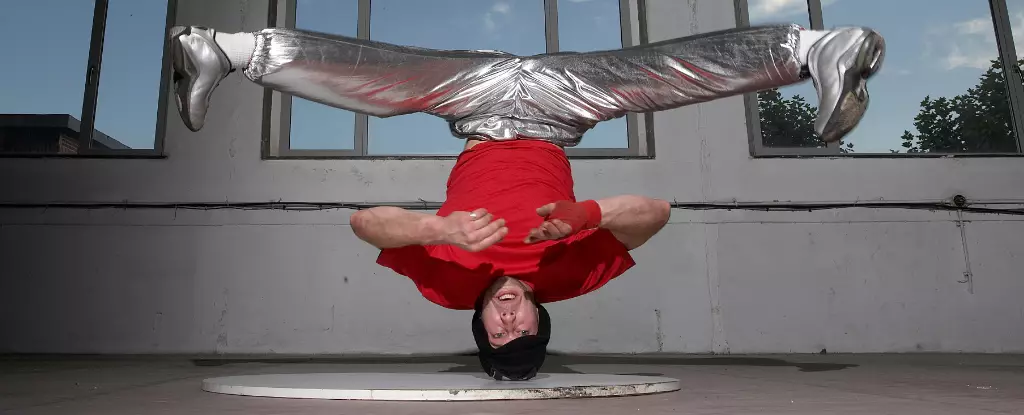Breakdancing, a vibrant and acrobatic dance form that emerged from street culture in the late 20th century, has long captivated audiences with its dynamic moves and athleticism. However, the physical demands intrinsic to breakdancing carry risks that extend beyond the typical sprains and strains associated with most sports. An intriguing and alarming phenomenon has recently come to light known as “headspin hole” or “breakdancer bulge,” a condition reflective of the unusual injuries dancers experience as a result of their art.
At the heart of this issue is a 2024 medical case report detailing the condition of a dedicated breakdancer who had been performing for nearly two decades. This dancer exhibited a distinctive, cone-shaped protrusion on the scalp resulting from years of executing headspins—a signature breakdancing move. This condition, colloquially termed the “cone head,” is an atypical injury that elicits curiosity and concern among both medical professionals and the breakdancing community.
The cone-shaped mass forms as a biological defensive mechanism. The repeated impact and friction from headspins promote an excessive thickening of the epicranial aponeurosis—a connective tissue layer pivotal in cranial protection. Contrary to typical injuries where the immediate response might be inflammation, in this case, the body adapts and seeks to fortify the scalp’s structure. It is worth noting that approximately 30% of breakdancers have reported similar scalp issues, highlighting the prevalence of this alarming condition.
Beyond the Cone Shaped Head: A Range of Breakdancing Injuries
While the “headspin hole” is striking and somewhat peculiar, it is not the only casualty of breakdancing. Dancers often sustain various musculoskeletal injuries, underscoring the rigorous nature of their craft. Common afflictions include injuries to the wrists, knees, hips, and ankles, with movements such as the “windmill” and “backspin” implicated in serious conditions like bursitis.
These injuries reflect the cumulative trauma dancers experience from routine practice and performance, reminiscent of degenerative injuries noted in other sports. Given the high-stress maneuvers executed during battles and performances, a comprehensive awareness of injury prevention becomes essential. Protective gear, much like in other physically demanding sports, could offer significant benefits in mitigating these injuries and promoting a healthier practice environment.
Interestingly, the physical manifestations of strain in breakdancers mimics some situations observed in newborns experiencing cranial deformation during childbirth. Just as some infants may present conical head shapes after being molded through the birth canal or due to mechanical assistance during labor, breakdancers develop similar features through rigorous physical movements.
These newborn conditions include caput succedaneum, which results from fluid buildup, and craniosynostosis, a more serious condition where skull plates fuse too early, leading to abnormal head shapes. While these conditions typically resolve themselves over time, they underline the necessity for recognizing and addressing cranial deformities stemming from mechanical pressure—paralleling the insights gained from breakdancers’ head injuries.
The Road to Recovery and Adaptation
Despite the perils associated with breakdancing, many dancers, like Ukrainian artist Anna Ponomarenko, have shown remarkable resilience. After suffering severe injuries, including a pinched nerve that initially left her paralyzed, Ponomarenko made a substantial recovery, allowing her to represent her nation at the Paris 2024 Olympics—a testament to the human spirit and the ability to adapt despite physical setbacks.
Ponomarenko’s story serves as a powerful reminder of both the limits and potential of the human body. It also opens up discussions regarding the need for proper training, warm-up routines, and safety protocols within breakdancing communities, ensuring dancers can express themselves artistically without jeopardizing their health.
The revelations regarding breakdancing-related injuries, especially the peculiar “headspin hole,” compel dancers, trainers, and the medical community to engage in dialogue about injury prevention and treatment strategies. By emphasizing the significance of proper technique, the use of protective gear, and an understanding of bodily responses to repetitive trauma, the breakdancing community can cultivate an environment populated by passionate yet healthy dancers.
As this dance form continues to gain recognition globally, particularly in light of its inclusion in the Olympic Games, it is essential to prioritize the well-being of breakdancers. Only then can the culture flourish organically, celebrating the fusion of artistic expression with physical integrity.


Leave a Reply